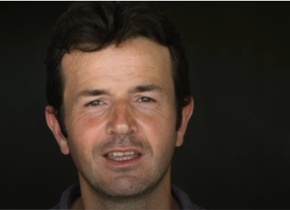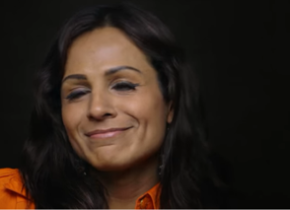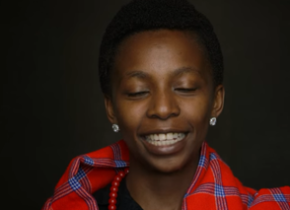Unit C.1.3 Understand cultural stereotypes, prejudices, and the process of culture shock
Understand cultural stereotypes,
Understand cultural stereotypes,
prejudices, and the process of culture shock
Understand cultural stereotypes,
prejudices, and the process of culture shock
Understand cultural stereotypes,
prejudices, and the process of culture shock
Sometimes we see something which looks very simple. But look again from another point of view, and you may see something different (`{`2`}` p. 81).
This is where intercultural learning comes into play. It is one of the learning areas that is crucial nowadays. Intercultural learning is not a new topic in the field of education or youth work. It remains an important topic for the political priorities of both the European Commission and the Council of Europe, and of their partnership in the field of youth.
Below you see three photos of people. Choose one photo (if you wish you can work on all three photos), look at the photo(s) carefully for a couple of minutes, and write down a short story about this person:
TRISTAN

SAUL-MORGANA

WANGECHI

From which country is he/she? What is she/he doing? What are his/her professional activities? How would you describe the character of this person? Write down everything that comes to your mind when you look at this person. ![]()
Find another learner on the Cultural stereotypes forum who has chosen the same person. You can simply add a topic and mention which person you chose, or comment on existing topic which mentioned matching person.
Share your story with another learner and compare your stories. At the end, discuss in pairs:
– What similarities do we see in our stories?
– What differences?
– What would you take from another learner to add to your story, and what would another learner take from your story to add to his/her story?
So, who is the person you could choose to write a story about?
Tristan. Tristan Lecomte is from France and lives in Thailand. When he describes his job, he says he plants trees. With his company, the Pure Project, he helps small farmers around the world to plant trees to regenerate the ecosystems on which they depend and to reduce our carbon footprint.
Watch this video where Tristan speaks about himself.
Saul-Morgana. Saul Morgana is an opera singer, a commercial music singer and a singing teacher in Mexico City. She hasn’t always had a woman’s body; she’s a transsexual. But she always remembers having behaved like a little girl, and tells about her relationship with family and men; and about the discrimination she suffered in a deeply macho society.
Watch this video where Saul-Morgana speaks about herself.
Wangechi. Born in Kenya, Wangechi discovered she was black when she arrived in Australia. There, her skin color began to define her: she, who had always lived in a big cosmopolitan family, suddenly became the “black friend”.
Watch this video where Wangechi speaks about herself.
After watching the videos, go back to the topic you created or joined in cultural stereotypes forum and add your answer to this questions:
1. Did you change some aspects about the person you choose after you spoke with another learner? Why?
2. What is your first impression after you read information about the person and saw the video? What surprised you the most?
3. What do you think about this person after you read information and saw the video? How would you change the story you wrote about him/her?
4. Why do you think is hard to see about a person by only looking at a picture?
We could say that through the picture and video you had the first encounter with the person you chose. This was of course not a real encounter, as you could not talk with Tristan, Saul-Morgana, or Wangechi and ask them questions that interest you, but you could see them and hear their stories, you could know them as real people. Thus, your cultural encounter was momentary, only lasting a few minutes.
Imagine how many people from other cultures we meet in such a way. Many! We encounter them, but in some cases we do not have a lot of time to get to know them. In other cases we might know some facts about people from other cultures and think “So, yes, he/she might be such a person, because people from this country are…”.
As we previously mentioned, to gain an understanding of other cultures and other people and to gain a feeling of acceptance we need to encounter others.

However, cultural encounters are far from a happy-go-lucky and smooth process as encounters can also bring out inequalities and exclusion, cultural conflicts and discrimination, as well as cultural stereotypes and prejudices (Otten, 2003, 2012; Moate, 2011; Shaules, 2007). Most importantly, this can also come from our side. We should thus be conscious of the cultural stereotypes and prejudices we have and how they shape our thinking and our interactions with people from other cultures. We also should be conscious about stereotypes and prejudices other people have about us and try to break these stereotypes and prejudices.
Everyone is prejudiced and uses stereotypes.
Do you see any prejudice and stereotype in the story you wrote about the person you choose?

Everyone also can use prejudices and stereotypes when they meet other people: about gender, about culture, about languages, etc.
The difficult part is that with stereotypes and prejudices is that we put people into boxes and expect people to be this or that way.
Stereotypes and prejudices are interrelated concepts that affect our perception of people and intercultural relations. Intercultural learning aims to help to identify stereotypes and prejudices in one’s own and in other people’s behaviour, to understand how they function and to take conscious steps towards breaking them (Sandu, Lyamouri-Bajja, 2018).
Watch these videos:
Read page 31-33 in the handbook All differet- All equal (until Linking the images and their effects).
Now copy bellow questions in your notebook and answer them: ![]()
1.What are stereotypes and prejudices?
2.What are the similarities and differences among both of them?
3.Why do we have stereotypes and prejudices about other cultural groups?
While stereotypes are cognitive structures and prejudices are attitudes based on value judgments, discrimination refers to behaviour.
All three aspects are interrelated:

In other words, discrimination means that our prejudices turn into action. Discrimination is an unfair behaviour towards the members of a group based on the prejudices that exist towards that group. There are different types of discrimination (Sandu, Lyamouri-Bajja 2018):
Direct discrimination
Policies and behaviours that intentionally differentiate by cultural belonging and harm certain groups.
Indirect Discrimination
A standard that apparently is neutral, but in fact the ones who use it are aware that a specific group cannot conform to the standard; for example, a certain dress code that is either too expensive for some socio-economic groups or is not in accordance with their religious practices.
Structural discrimination
A complex form of discrimination in which the state institutions and structures fail to provide adequate services and equal opportunities to people because of their cultural belonging.

Intercultural learning challenges and rejects discrimination in all its forms and affirms pluralism (ethnic, linguistic, religious, economic, gender, etc.).
Moreover, the European Court of Human Rights has recognised that pluralism is built on the genuine recognition of, and respect for, diversity and the dynamics of cultural traditions, ethnic and cultural identities, religious beliefs, artistic, literary and socio-economic ideas and concepts, and that the harmonious interaction of persons and groups with varied identities is essential for achieving social cohesion.
Therefore, in order to stop discrimination, we should primarily break stereotypes and prejudices.
Read the short text written by Sandu, Lyamouri-Bajja (2018) „How to break stereotypes“, pages 26-27.
Now copy bellow questions to your notebook and answer them ![]()
1. How can we break the prejudices and stereotypes we have?
2. How do you deal with prejudices and stereotypes you hear around you?
3. How do you usually break stereotypes? Are you satisfied with it?
4. Which of the 6 examples of how we can break stereotypes you would like to use more often? Explain why.

